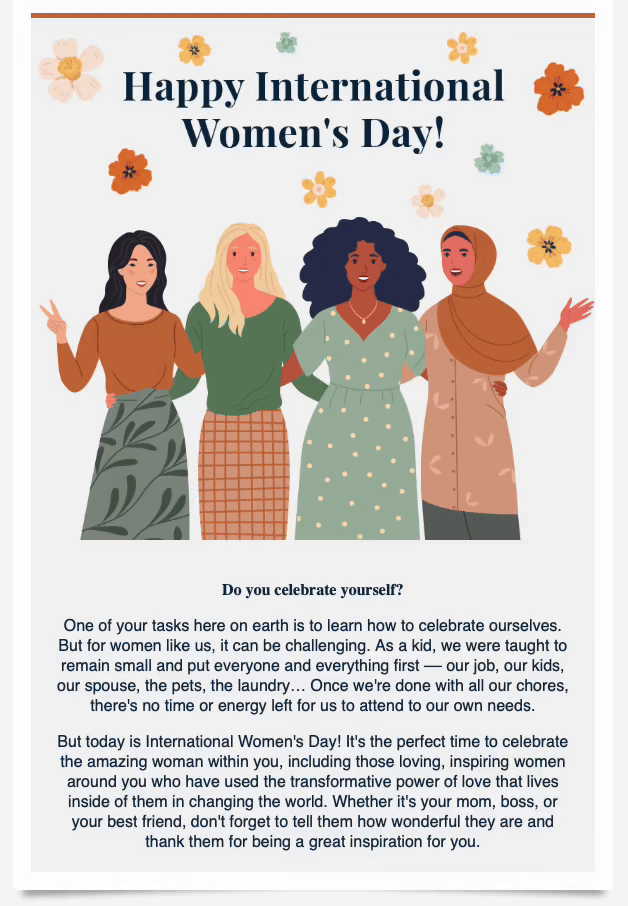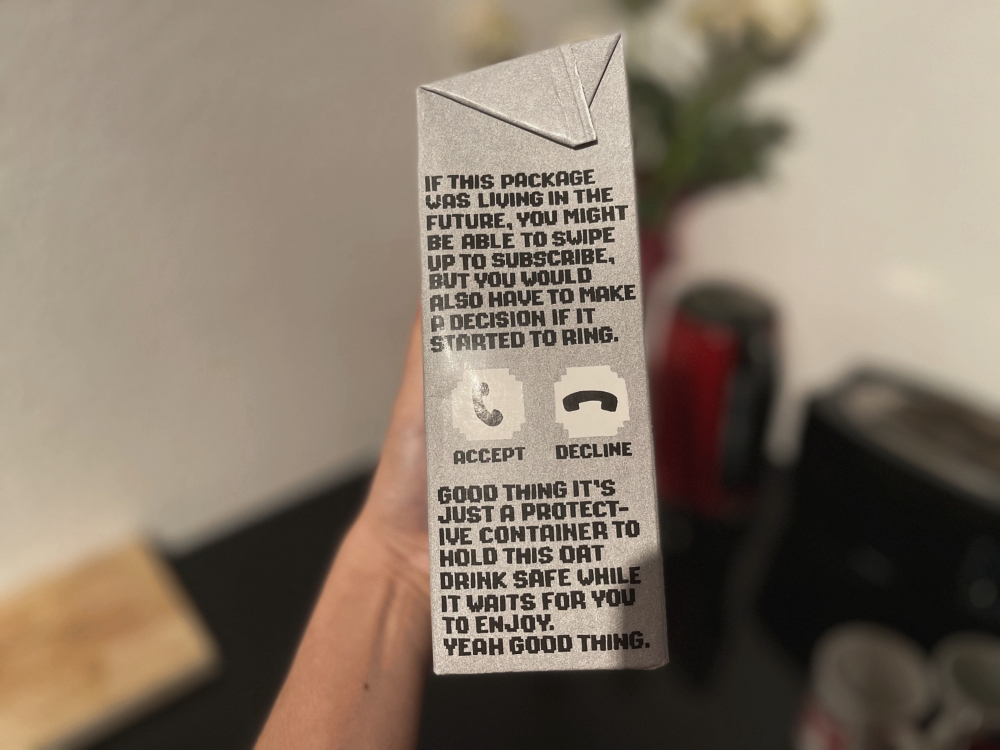
The Future of Marketing Is Human
Lately, I’ve been noticing a big shift in marketing that feels quite different from what we’re used to—and honestly, it’s exciting. Marketing, especially digital marketing, is starting to feel way more human. We’ve gone from polished ads and clever one-liners to focusing on something deeper: connection, empathy, and realness. I know, I know—”human connection” might sound like fluff in an industry full of metrics and data. But hear me out. This isn’t just a trend; it’s a movement.
Across online and offline channels, marketing is evolving fast. I don’t think we’re heading into a future where it’s just about having the latest tech or another algorithm hack. The brands that are really standing out are the ones that know how to tap into something genuine, something meaningful that makes people want to stick around. And it’s happening everywhere—from billboards and Instagram posts to the way we write emails. We’re not just aiming to “get eyeballs” anymore; we’re building relationships, creating moments that resonate.
Here’s why I think this shift is so important.
Why Empathy is the Future of Marketing Success
Let’s start with empathy. In the past, marketing was all about grabbing attention, and while that’s still true to a point, we’re seeing a shift to holding that attention by actually caring about the customer experience.
Think about it: when was the last time you stayed on a brand’s page or read through an entire email because it felt like it was written for you? Good marketing today isn’t just guessing what people want—it’s tuned in to what they’re feeling, what they need, and why they’re looking in the first place.
And I can’t help but think back to when I managed a Facebook page for a community of mums in 2010. We had thousands of followers, and I made sure our content calendar included some posts that stirred a bit of controversy or dived into emotional, personal topics. My colleagues used to tease me that these posts were “too personal.” I’d tell them, “That’s the whole point!” I knew that the only way to truly connect was through emotions. If we could touch people’s hearts and make them feel seen, they’d keep coming back. And guess what? Even a decade later, after I’d moved on, I checked in on that page, and they were still using the same strategy—connecting through empathy and emotion, with that personal touch front and centre.
Another time, while working with a team in an eCommerce email marketing agency in London, I had a similar experience. It was International Women’s Day, and our task was to send a newsletter targeted to women only. So, I went for it, tailoring the copy to feel like it came from someone who understood the endless list of responsibilities women juggle—kids, work, spouses, pets, laundry—all the things that make it hard to actually pause and celebrate ourselves. I framed it as a moment of recognition for women who rarely have time to celebrate themselves. Our client manager, who was a bit uncertain at first, said, “Well, I’m just a guy; I trust you know what will resonate.” And guess what? The client loved it. She knew immediately that it was something her audience would connect with because it was real, relatable, and tapped into the universal experience of having too much on your plate to even think about a day “for you.”

This shift isn’t limited to the digital space; it’s spilling over into traditional marketing too. Brands that understand their audience’s emotional needs see more engagement, better word of mouth, and loyalty that lasts. This is the heart of why empathy isn’t just a buzzword; it’s becoming the essential part of any successful marketing strategy.
Embracing Imperfections as the New Marketing Trend
Something else I’m noticing? People are craving authenticity more than ever. You know those ads that look too perfect, too “ad-y”? They’re not cutting it anymore. We’ve entered an era where people want to see real stories, real experiences, and, honestly, the quirks and imperfections that make a brand feel human.
And you see this all over, not just online. Look at the rise of the “slow lifestyle” trend or the charm of “farm life” taking over social media. Sure, these posts are often beautifully curated, but they feel real and relatable. People are captivated by scenes of quiet, simple living—growing vegetables, making sourdough from scratch, spending time outdoors. It’s not about flashy branding or polished perfection; it’s about something deeper and slower, a reminder of a lifestyle many are craving.
People are sharing photos of freshly picked tomatoes or rustic homemade bread because it feels authentic and personal, not because anyone is pushing them to do it. There’s a warmth to it, a sense of realness that cuts through the usual social media gloss. And that’s what’s starting to click in marketing today: the future is about being relatable, grounded, and unapologetically human.
And you know who does this brilliantly? Oatly. I’m a fan not just because their oat milk is great, but because their packaging talks directly to me. Every carton has quirky, conversational messages printed on it—sometimes funny, sometimes random, but always real. It’s like they’re saying, “Hey, we’re just like you, trying to make sense of this crazy world.” They’re not trying to be polished or perfect, and that’s exactly why it works. It’s real, and it feels like you’re getting a product from someone who gets it. Brands like Oatly are setting a new standard by just being themselves—and that authenticity is what people are loving right now.

Storytelling Isn’t Just a Buzzword—It’s the New Foundation of Marketing
We’ve all heard that “storytelling is king,” but it’s honestly becoming the essential tool for marketers who want to make an impact. People don’t remember lists of features or shiny, salesy slogans, but they do remember stories. And it makes sense—stories stick with us. They hit deeper because they’re how we make sense of the world, and brands that get this are building some serious loyalty.
Think about a brand like Patagonia. Their entire brand story is about sustainability, environmental impact, and adventure. People connect to that story not just because they make quality gear, but because they align with values that feel bigger than just buying a jacket. It’s real, and it gives people a reason to care. The brands that leverage storytelling like this are creating genuine fans, not just customers.
This storytelling approach works because it’s memorable. I’ve noticed that the content that gets shared the most is rarely just a list of tips or a shiny product announcement. It’s the story behind it, the struggle, the purpose.
And this isn’t just online; it’s bleeding into offline spaces too. Billboards, magazine ads, even product packaging—brands are starting to tell stories everywhere, and people are paying attention.
From Building Audiences to Building Communities
One of the most powerful shifts happening right now is moving from building audiences to building communities. This is where brands are winning big because it’s not just about counting the clicks or views anymore—it’s about creating spaces where people actually want to come back and engage.
Look at Lululemon. They don’t just sell athletic gear; they host yoga classes, workshops, and events that bring people together. Their customers aren’t just buying leggings—they’re part of a community, connecting with each other and with the brand. And the loyalty this builds? It’s priceless. People keep coming back because they’re not just “customers”; they’re insiders, part of something bigger.
This community-focused approach is working wonders in digital spaces too. Whether it’s a brand’s private Facebook group, an exclusive newsletter, or even the comment section on an Instagram post, people want to engage with brands that listen, that respond, and that feel like real people.
Building these spaces is becoming essential because it keeps people coming back for more, and that long-term loyalty is what’s going to set brands apart in a big way.
Why Intent is Outranking Keywords
Let’s talk SEO for a second because this is another area where the shift toward a more human approach is really taking hold. For years, marketers have been laser-focused on keywords, cramming them into content to rank higher on search engines. But search engines have gotten smarter. Now, they’re more focused on the intent behind a search than the specific words people type in. And this means that understanding why someone is searching has become far more valuable than just guessing what they’ll type.
This is a big deal because it’s forcing marketers to take a deeper look at what people actually want. Instead of trying to trick an algorithm, we’re now creating content that genuinely answers people’s questions, solves their problems, or just adds value. In other words, we’re going back to real marketing—understanding what people need and providing it.
This shift from keywords to intent is changing everything, from the way we write blog posts to how we design ad copy. Brands that prioritise understanding intent over chasing keywords are getting rewarded because their content is actually useful. And as search engines get better at figuring out what users want, this approach is only going to become more important.
Balancing Tech with the Human Touch
Look, I’m not saying tech isn’t important. AI in digital marketing, automation, and data are all still crucial, but I think we’re finally hitting a point where tech alone isn’t enough. Marketing is, at its core, about people, and tech is here to support that, not replace it. AI can help us analyse data, automate tasks, and even personalise experiences. But it can’t build the genuine connections that people crave.
Let’s take email marketing, for example. AI can help personalise send times, target segments, and even tailor subject lines. But if the actual message inside that email is dry, robotic, or overly salesy, people won’t engage. The real magic happens when you combine the tech with a message that feels personal, helpful, or even a little funny. That human touch is what makes people open, read, and connect.
Why Marketing’s Future Is Human (and Why That’s So Exciting)
So here’s where we’re at: the future of marketing isn’t just about more tech, more data, or more automation—it’s about more human connection. It’s a shift from grabbing attention to actually earning trust, from shouting for clicks to creating experiences that feel authentic, real, and maybe even a little raw. Brands that lean into this are the ones standing out, building loyalty that lasts.
And I’ll be honest, it’s something I’m working on, too. I’m all about telling real stories on my own social profiles, but as an introvert, I still sometimes shy away from all the engagement that comes with it. Yet I love where marketing is heading, especially since I’ve never been a fan of anything too salesy or overly “marketing-y.” My approach has always been that the best way to market is to not make it obvious you’re marketing. If you can keep things natural and relatable, you’re doing it right.
So, here’s my take: If you’re in marketing, it’s time to double down on that human side. Whether it’s connecting with people in comments, telling authentic stories, or building a community, the brands (and people) who embrace this new chapter will lead the way. And honestly? I think it’s making marketing way more meaningful—and for introverts like me, a lot more fun!
